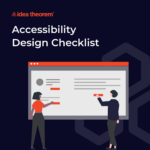Development & Engineering
From Raw Data to Insights: How to Build an End-to-End BI Solution
09 MAY 2025
7 mins read


In today’s data-driven world, businesses generate vast amounts of data daily—from website clicks to financial transactions. But raw data alone isn’t enough to drive decisions. The true value lies in turning that data into actionable insights through a comprehensive end-to-end Business Intelligence (BI) solution.
At Idea Theorem, we help organizations unlock the full potential of their data using modern BI platforms like Microsoft Power BI and Azure Synapse Analytics. In this blog, we’ll guide you through the complete process of building a BI solution—from data collection to impactful reporting—ensuring it’s scalable, secure, and aligned with your business goals.
Step 1: Define Your BI Objectives and KPIs
The foundation of any successful BI project is clarity. Before collecting data, you must determine:
- What problems are you trying to solve?
- What key performance indicators (KPIs) matter most?
- Who will use the reports and dashboards?
Tip: Align your BI strategy with your company’s goals. This ensures your dashboards support real business outcomes, not just data visualizations.
Step 2: Data Collection and Integration
Raw data can come from multiple sources—CRM systems, ERP platforms, marketing tools, and even spreadsheets. A modern BI solution integrates all these sources into a centralized data hub.
Common Data Sources:
- SQL databases
- Microsoft Dynamics 365
- Google Analytics
- Excel and CSV files
- Third-party APIs
At Idea Theorem, we use tools like Azure Data Factory to automate and manage data pipelines efficiently.
Step 3: Data Transformation and Cleansing
Raw data is rarely analysis-ready. It often contains duplicates, errors, and inconsistencies. The next step is to clean, transform, and structure it using ETL (Extract, Transform, Load) processes.
Best Practices:
- Standardize formats (e.g., dates, currencies)
- Remove duplicates and null values
- Map and enrich data for consistency
Tools like Power Query, Azure Synapse, and Databricks are commonly used to ensure clean, structured datasets.
Step 4: Data Storage and Modeling
Once transformed, the data needs a home. Choose a data warehouse or data lake depending on your needs. For most BI applications, we recommend Azure Synapse Analytics or SQL Data Warehouse for high-performance analytics.
Next, build semantic models to define relationships, hierarchies, and metrics. A solid data model:
- Reduces redundancy
- Improves performance
- Enables easy slicing and dicing in reports
Step 5: Visualization and Reporting
Now comes the exciting part—transforming structured data into interactive dashboards using Power BI. Visualizations bring clarity to complexity, helping teams spot trends, opportunities, and risks instantly.
Power BI Dashboard Tips:
- Use slicers for filtering by region, department, or time
- Visualize trends with line charts and KPIs
- Provide drill-down options for deeper insights
- Maintain visual consistency across pages
At Idea Theorem, we build custom dashboards tailored for marketing, sales, finance, HR, and operations teams.
Step 6: Governance, Security, and Compliance
Security is not optional. Your BI solution must ensure data privacy, role-based access, and compliance with regulations such as GDPR and HIPAA.
Security Measures:
- Row-level security (RLS) in Power BI
- Azure Active Directory integration
- Audit logging and usage tracking
We help clients establish secure BI environments using Microsoft’s trusted cloud infrastructure.
Step 7: Deployment and Continuous Improvement
Once your dashboards are live, the journey isn’t over. Continuously monitor usage, collect feedback, and update dashboards as your business evolves.
Ongoing Maintenance Includes:
- Scheduled data refreshes
- Version control and change tracking
- Performance tuning
Idea Theorem offers ongoing BI support and training to keep your solution aligned with business growth.
Conclusion
Building an end-to-end BI solution requires a strategic blend of tools, processes, and expertise. From defining KPIs to securing data and delivering interactive dashboards, each step plays a vital role in transforming raw data into real insights.
At Idea Theorem, we specialize in delivering scalable, secure BI solutions tailored to your business goals. Whether you’re starting from scratch or optimizing an existing BI setup, our team is here to guide you every step of the way.Ready to make smarter decisions with BI?Contact Idea Theorem today and transform your data into a competitive advantage.





